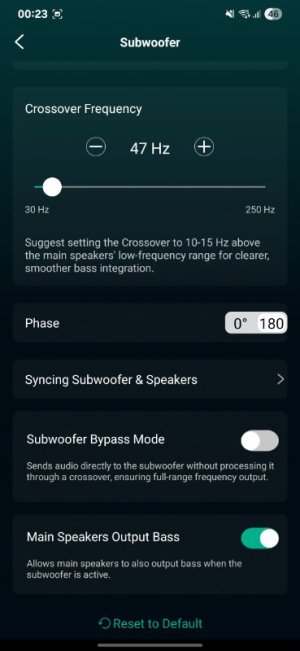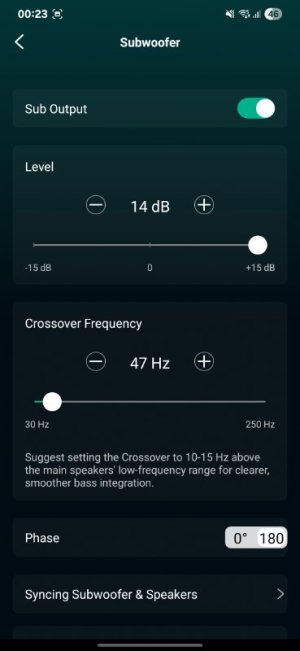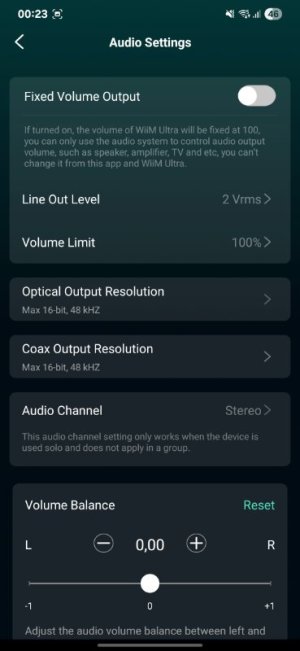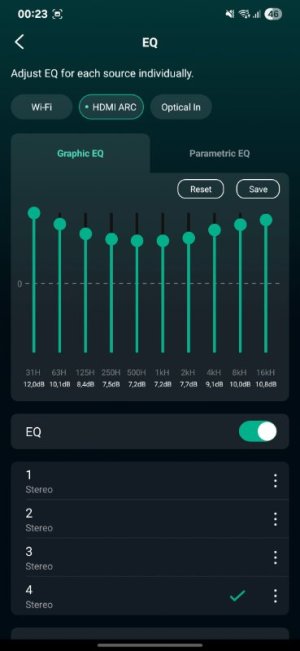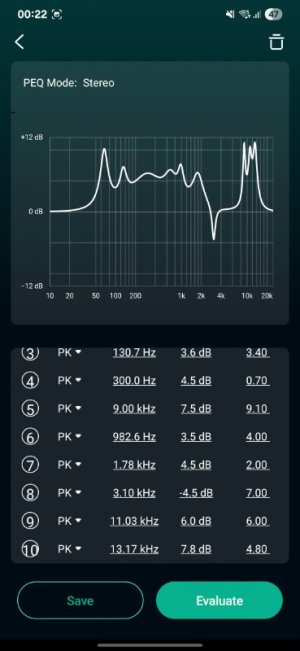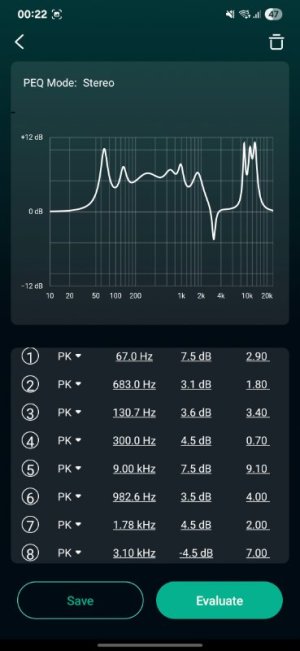I have been experimenting with RoomFit and have never really obtained a good sound unless I tweaked EQ afterwards.
So my calibration process has been:
- run a sub sync first
- then run a Roomfit correction (I use BK curve)
- fine tune EQ/PEQ to your liking or to get the measured sound curve as close to the target curve as possible
Following this gives good results, but then I thought, what would happen if I then used Housecurve to run another calibration to give me what it thinks the final PEQ filter setting should be. Housecurve performs a very similar calibration to obtain PEQ filter settings (but is easier to use and see the curve responses) then I manually copied these over to the Wiim Ultra app into the Parametric EQ settings.
The resulting sound is amazing and far better than just running RoomFit and tweaking manually.
Is this accidental or is it a case of whatever works for you?
I would be interested in your views on this. Thanks in advance...
So my calibration process has been:
- run a sub sync first
- then run a Roomfit correction (I use BK curve)
- fine tune EQ/PEQ to your liking or to get the measured sound curve as close to the target curve as possible
Following this gives good results, but then I thought, what would happen if I then used Housecurve to run another calibration to give me what it thinks the final PEQ filter setting should be. Housecurve performs a very similar calibration to obtain PEQ filter settings (but is easier to use and see the curve responses) then I manually copied these over to the Wiim Ultra app into the Parametric EQ settings.
The resulting sound is amazing and far better than just running RoomFit and tweaking manually.
Is this accidental or is it a case of whatever works for you?
I would be interested in your views on this. Thanks in advance...

